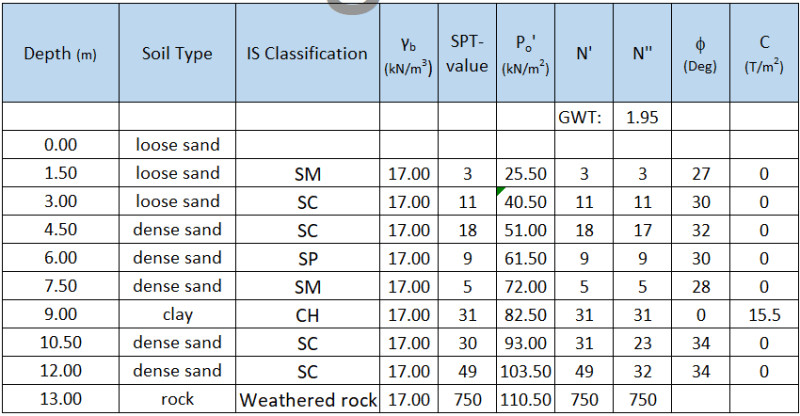"Currently, I am trying to calculate the SBC (Safe Bearing Capacity) of soil using SPT N-values. To find that, I require the c, φ, and E values of each layer. I have calculated the individual c, φ, and Young's modulus values and then used a weighted average to calculate SBC. The current challenge I face is that, once I take the weighted average, the values are found to be c = 3.5 t/m² and φ = 27°. However, in the case of sand, c = 0, and in the case of clay, φ = 0. So, I feel this is an error because c = 3.5 > 0 is unrealistic and vice versa.
Kindly provide your opinion on this.
I feel I need to have some equivalent values representing c and φ based on the N-value for either cohesive or cohesionless soil. By multiplying the N-value with that equivalent value, we can obtain the Young's modulus of the soil.
Es= (fn() or equivalent value) * N value
Kindly provide your opinion on this.
I feel I need to have some equivalent values representing c and φ based on the N-value for either cohesive or cohesionless soil. By multiplying the N-value with that equivalent value, we can obtain the Young's modulus of the soil.
Es= (fn() or equivalent value) * N value

